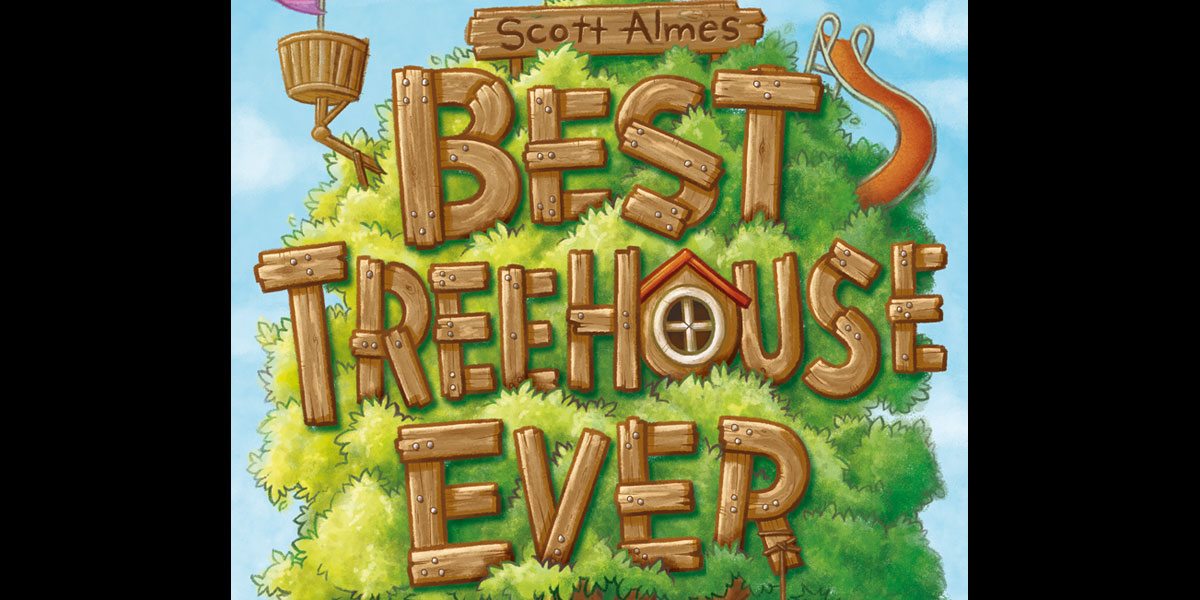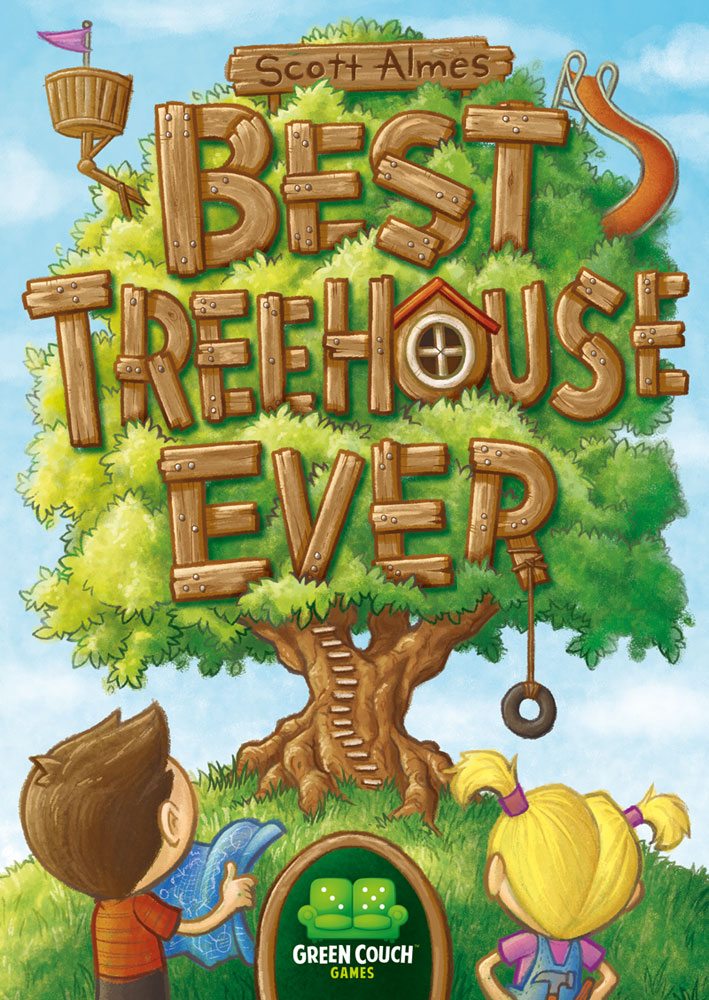Spring is almost here, and it’s time to build a treehouse. But not just any treehouse. The Best Treehouse Ever. This simple card game from Green Couch Games will let you and your friends and family build treehouses with things like hot tubs, game rooms, and hot dog stands.
At a glance: Best Treehouse Ever is for 2 to 4 players, ages 10 and up, and takes about half an hour to play. It’s currently on Kickstarter, with a pledge level of $16 (plus shipping) for a copy of the game, and an estimated delivery date of November 2015. I’ve played the game with much younger kids, though with some parental assistance.
New to Kickstarter? Check out our crowdfunding primer.
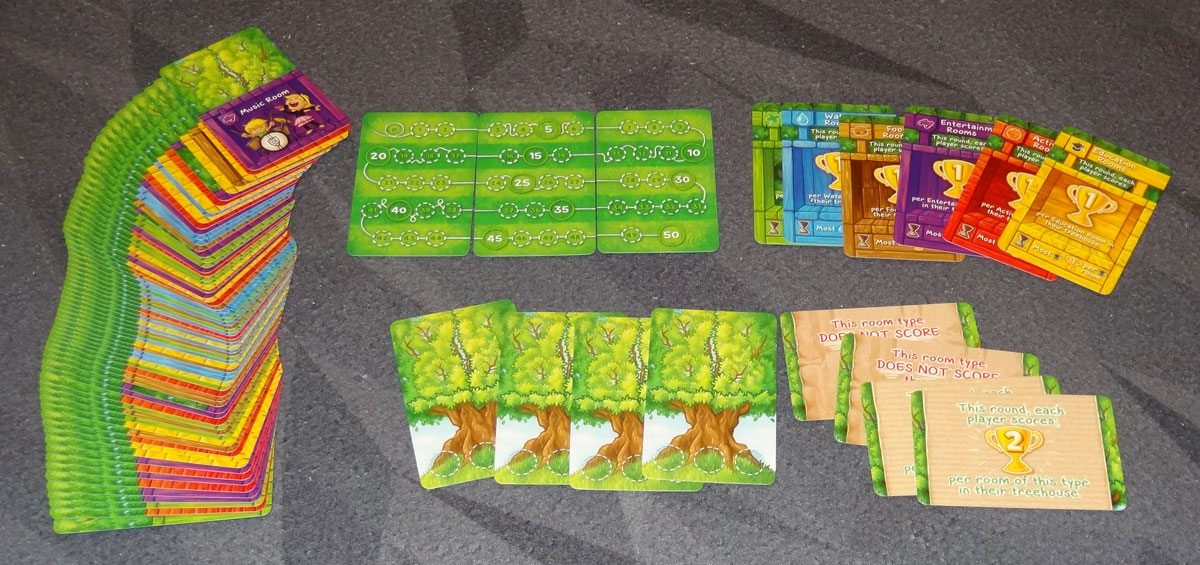
Components
- 72 Treehouse Room cards
- 4 Starting Tree cards
- 8 wooden player tokens
- 3 Scoring Track cards
- 6 Round Scoring cards
- 4 Game Changer cards
I received a prototype copy with mostly finished artwork but the component quality wasn’t final. The campaign has already funded and unlocked linen finish cards, and there are additional stretch goals to unlock some hidden goal cards and additional room illustrations. This last stretch goal won’t change the gameplay but will just add variety to the look of the game.

The artwork on the cards, by Adam McIver, is really great. There are six categories of rooms: activity, education, outdoor, water, entertainment, and food; within each category there are several different rooms, though the differences are cosmetic and don’t affect gameplay.
The scoring track is made up of three cards and you’ll have a little wooden pawns to move along the track. It’s pretty tiny, and I found it was easy to bump the cards, but it works all right.
How to Play
You can download the rules PDF or even a free Print and Play to try it out before you pledge.
The goal of the game is to score the most points after three “weeks” (rounds) of building.
Everyone gets a starting tree card, a wooden token, and a hand of 6 room cards. The Round Scoring cards and the Game Changer cards are placed in the center of the table. You place your starting tree in front of you, with the wooden token on the center circle. This token represents the balance of your tree. Note: be sure to allow plenty of room above your starting tree card, because you’ll be building up and out from there!
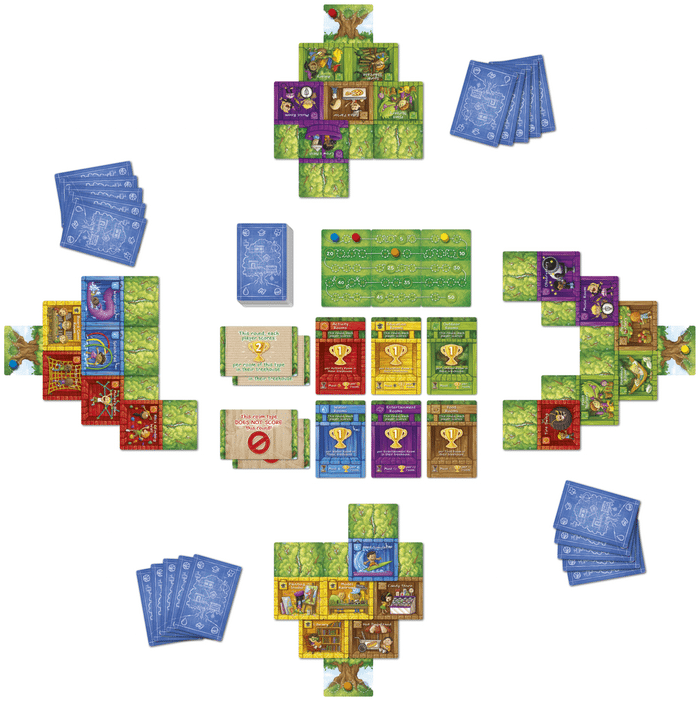
Each “week” or round will be five days. You pick one card that you want to build and then pass the rest of your cards to the player next to you. Once everyone has chosen, the rooms are revealed and added to the treehouse.
Staying balanced: If the new room is left of the center line, then you move your balance token to the left; if it’s to the right, you move the token to the right. If you build directly above the center trunk, then it doesn’t move. If you’re supposed to move the token and you can’t because it’s already all the way to the side, then you can’t build a room there.
Staying connected: The rooms in your treehouse have to stay connected by color. So if you’re adding a room and that color is already in your treehouse, the new room has to touch the matching color already there. If you build above a particular color so that you can’t connect to it anymore, then you can’t add any more of that color to your treehouse.
Optional discard: If you can’t or don’t want to build any of the rooms in your hand, you still pick one, and then when everyone reveals their cards, you just discard it instead.
After 5 turns, the round ends–everyone discards the last card from their hands, and there’s a scoring round.
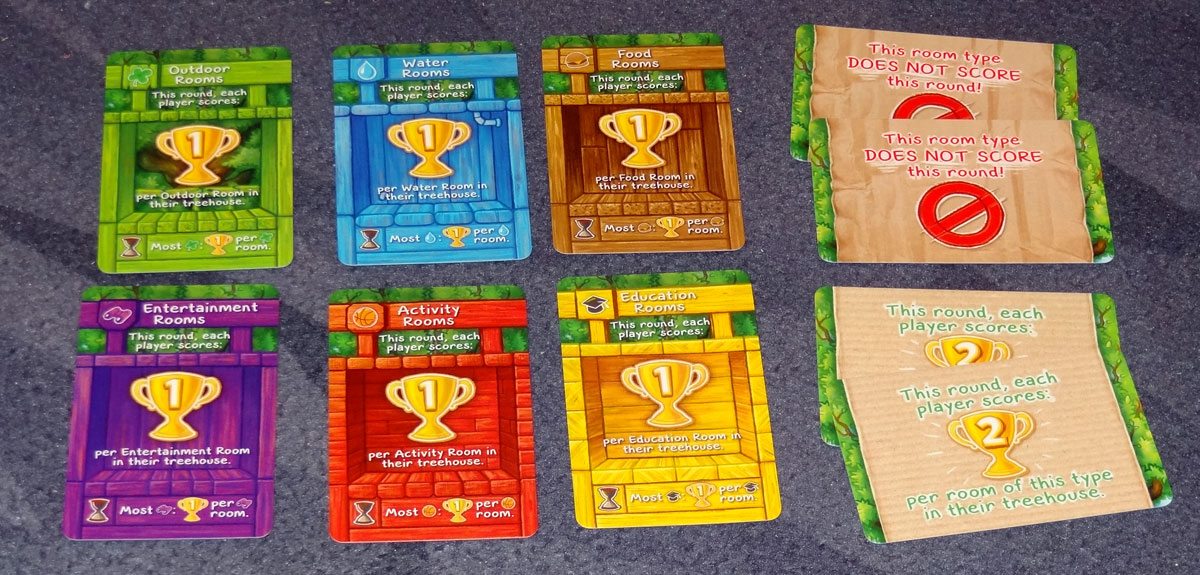
Starting with the first player (the oldest player in the first round, and then the player with the most points in subsequent rounds), each player chooses one of the Game Changer cards and takes it. Then, in reverse order, each player places a Game Changer card on one of the six scoring cards. The default score for a room type is 1 point. Two of the Game Changer cards will make rooms count double, and two will make the rooms score nothing. So you might try to double the red activity rooms if you have a lot of them, but somebody else might sneak in and make them worth nothing. Then, each player scores points based on how many rooms of each color they have in their treehouse.
For younger players, you can play without the Game Changer cards. Each player will choose one of the scoring cards to activate, and then those cards will score 1 point per room for all players. The unchosen cards do not activate.
The game lasts for three rounds, so by the end you’ll have up to 15 cards in your treehouse if you didn’t discard any.
After the last scoring round, there’s a game-end bonus. For each type of room, the player with the most rooms will score 1 point per room. In case of a tie for most rooms, nobody gets a bonus.
Whoever has the highest score wins!

The Verdict
Scott Almes, the designer of Best Treehouse Ever, is well-known in the Kickstarter board game world for his Tiny Epic series: Tiny Epic Kingdoms, Tiny Epic Defenders, and Tiny Epic Galaxies, plus a few others like (somewhat tiny) Harbour and the decidedly not-tiny Kings of Air and Steam. But this may be his first game that I would describe as “adorable.” (Tiny Adorable Treehouse?)
I’ve played Best Treehouse Ever with adults and kids, and it’s a fun little game that’s quick to teach. Like any building-type game, it’s always fun to look at the end result and see what you’ve got. I’m a sucker for the library and board game room myself, but there are so many fun rooms to throw into your treehouse.
The trickiest part to learn is the balance token–it’s easy to forget to do it entirely. Also, there’s a (mistaken) tendency to move the token to the far side of wherever you played your last card, rather than moving it one step in that direction. But it does make sense thematically–if you put too many rooms on one side, your tree will tip over, so you have to keep things relatively balanced.
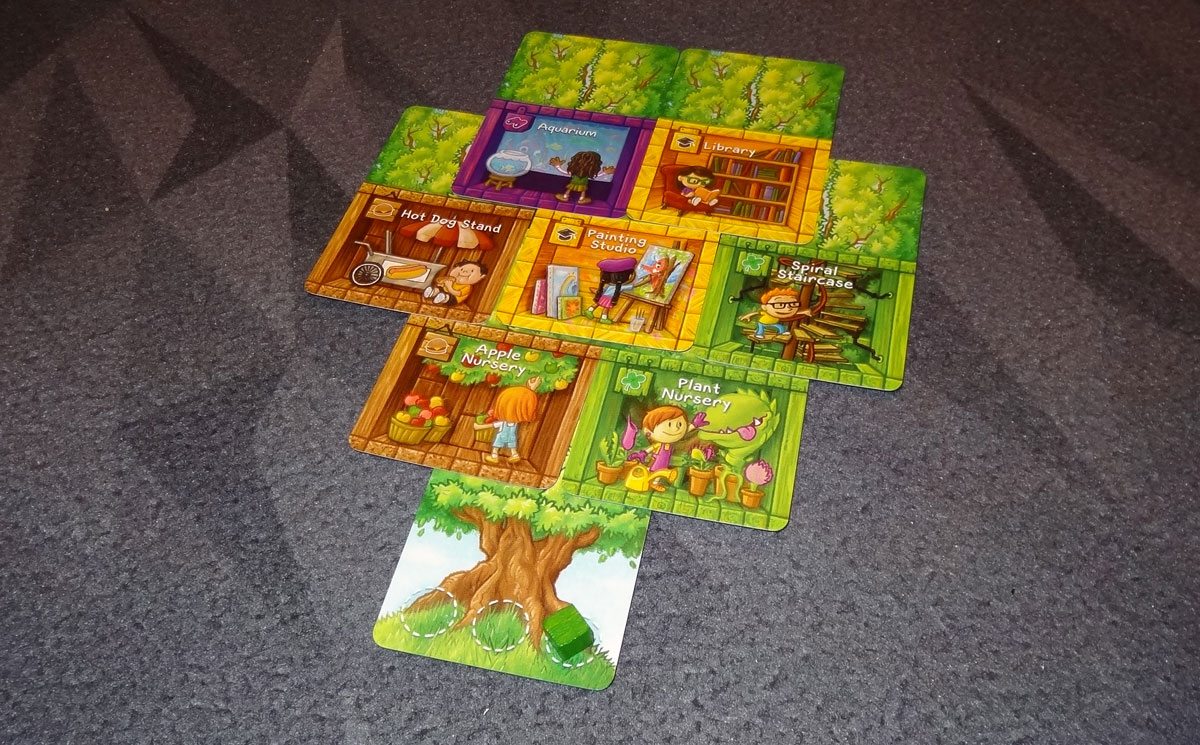
What really makes the game, though, is the scoring. Although you can use the scoring rules for younger players, I think the Game Changers are what really make the game fascinating and they add a nice strategic element to the game beyond just finding the best place to put rooms. You don’t know for sure which rooms are going to score double and which ones are going to score nothing until the Game Changer cards are placed–all you know is the turn order when you’ll get to draw and play a card. So you can decide if you want to press your luck by adding lots of one color, or pick several colors and hope you can score with at least some of them.
Even picking which Game Changer card to take can be an interesting choice. If you’re going first, you’ll get to take a card but you’ll play it last. If you’re worried that somebody will make your best room type worth nothing, maybe you better take one of the “no score” cards so there are fewer of them to go around. Going last means you may not have a choice of which Game Changer card to take, but you get the first chance to decide where it goes. It really serves as a nice catchup mechanic that doesn’t feel like an obvious catchup mechanic to younger players.

At first glance I thought Best Treehouse Ever was going to be a pretty simple game that only my kids would enjoy, but with the Game Changer cards it definitely works for adults. It’s still a light, casual game, but I like that there’s some substance to it.
If you like card drafting (see also: Sushi Go), this is another cute game that’ll be fun for both your kids and your adult gamer friends. Even if you don’t win, you’ll have fun putting together a crazy treehouse anyway.
For more information, check out the Kickstarter page.
